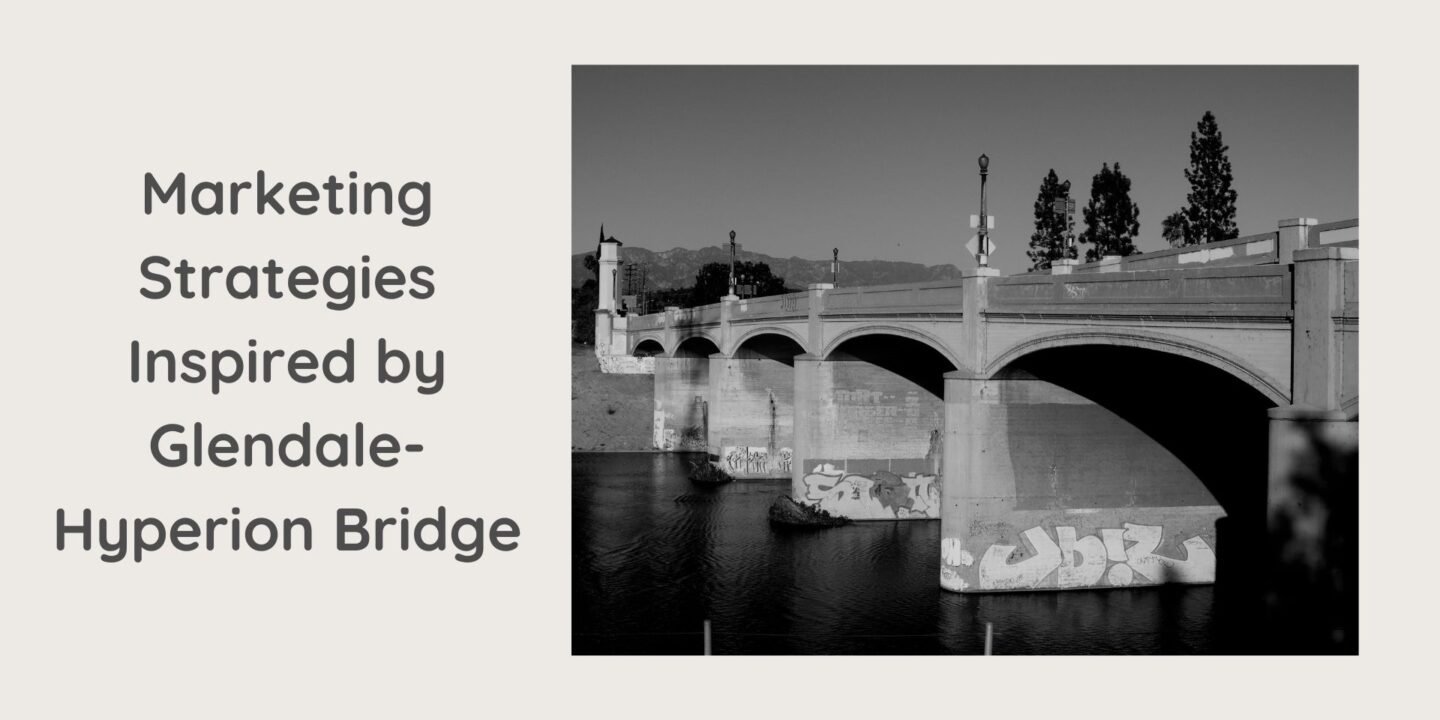
The Hyperion Bridge in Glendale has long been a topic of debate among locals, particularly cyclists who advocate for safer and more accessible infrastructure. While the primary focus of the discussion is on transportation and safety, several valuable marketing lessons can be learned from this situation. This blog explores effective marketing strategies inspired by Glendale-Hyperion Bridge controversy, highlighting critical takeaways for community engagement and infrastructure development.
About Glendale-Hyperion Bridge
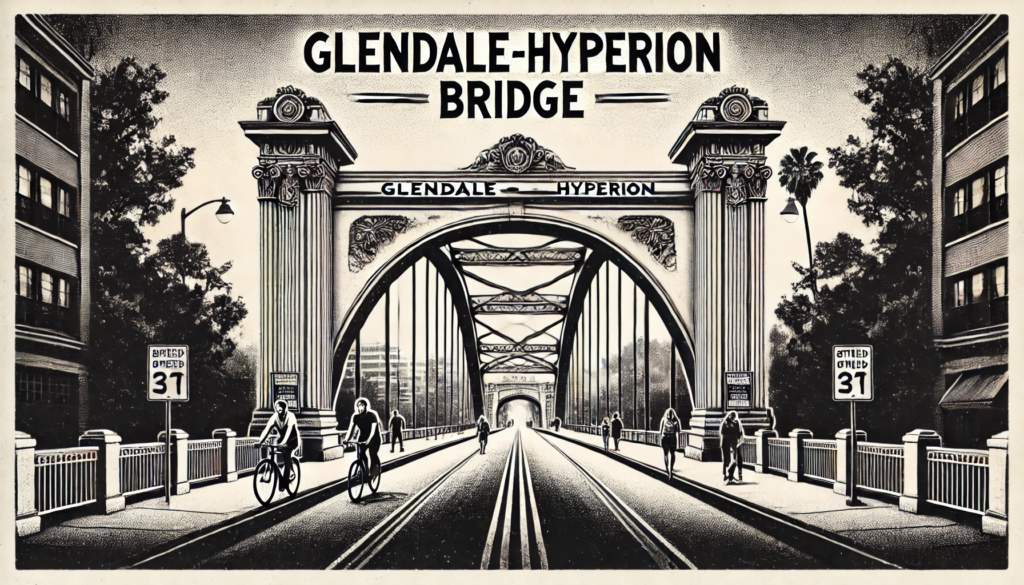
The Glendale-Hyperion Bridge is an iconic structure in Los Angeles, California that connects the neighbourhoods of Atwater Village and Silver Lake. Built in 1927, this historic bridge spans the Los Angeles River, the Golden State Freeway (I-5), and the railway tracks, facilitating significant traffic flow between Glendale and downtown Los Angeles.
Key Features and Historical Significance
Design and Architecture:
- The bridge showcases a beautiful example of Beaux-Arts architecture, characterised by its ornate details and graceful arches.
- It consists of four arches and is approximately 1,200 feet long, making it one of the longest bridges in the city at the time of its construction.
Construction and Engineering:
- Merrill Butler designed the bridge using reinforced concrete, a relatively modern material in the 1920s.
- The construction techniques and materials used were advanced for their time, reflecting Los Angeles’s rapid growth and modernisation.
Cultural Impact:
- The Glendale-Hyperion Bridge has been featured in numerous films, TV shows, and commercials, contributing to its status as a cultural landmark.
- It serves as a vital connection for commuters, pedestrians, and cyclists, integrating different modes of transportation into the city’s infrastructure.
Renovations and Maintenance:
- Over the years, the bridge has undergone several renovations to maintain its structural integrity and accommodate increased traffic.
- Efforts have been made to preserve its historical elements while ensuring it meets modern safety standards.
Understanding the Glendale-Hyperion Bridge Debate
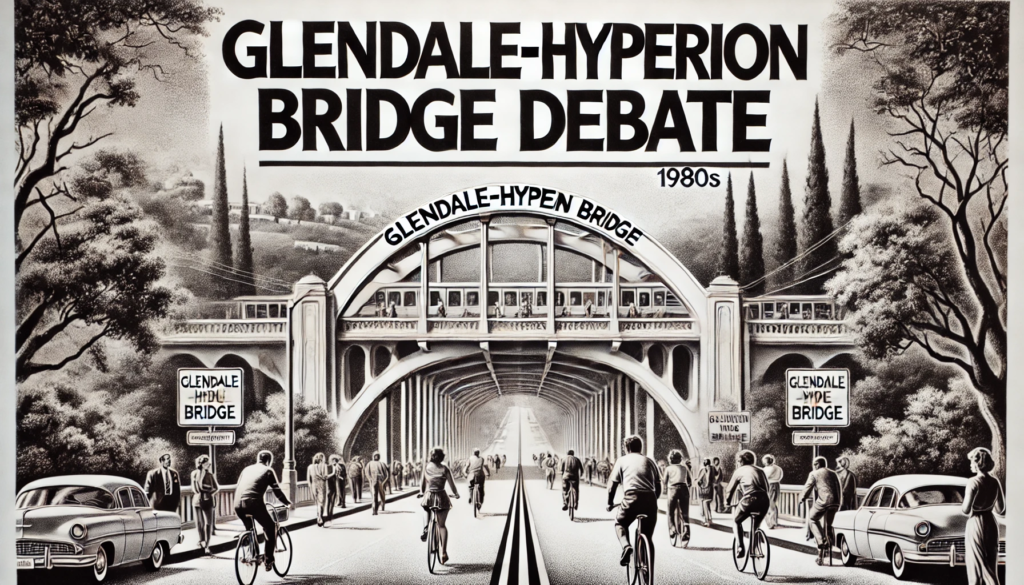
The Glendale-Hyperion Bridge has been at the centre of a heated debate for years. The discussion revolves around its future design and functionality, focusing on balancing historic preservation with modern infrastructure needs.
The Debate
The core of the debate involves the bridge’s renovation plans. There are two primary concerns:
- Preservation vs. Modernization: Preservationists advocate for maintaining the bridge’s original design to honor its historical value. Meanwhile, modernisation proponents argue for updates to improve safety and accessibility.
- Pedestrian and Cyclist Safety: Current bridge conditions are deemed unsafe for pedestrians and cyclists, prompting calls for dedicated lanes. Some plans propose wider sidewalks and bike paths, while others suggest separate bridges for non-vehicular traffic.
Proposed Solutions
Several suggestions have been proposed to address these concerns:
- Option 1: Restoration with Minor Updates: This plan focuses on restoring the bridge to its original state, with minor adjustments to enhance safety without altering its historical appearance significantly.
- Option 2: Comprehensive Modernization: A more drastic approach involves significant redesigns to accommodate modern safety standards, including dedicated bike lanes and wider sidewalks.
- Option 3: Hybrid Approach: This plan combines elements from preservation and modernisation and suggests maintaining the bridge’s historic elements while incorporating modern safety features.
Public Opinion
Public opinion is deeply divided. Community meetings and surveys reveal a split between those prioritising historical preservation and those who emphasise the need for safer, more accessible infrastructure.
Current Status
The final decision is pending. City planners continue to review feedback from various stakeholders, including residents, preservationists, and urban planners. The goal is to find a balanced approach that respects the bridge’s historical significance while ensuring it meets contemporary safety standards.
Effective Marketing Strategies Inspired by Glendale-Hyperion Bridge Debate
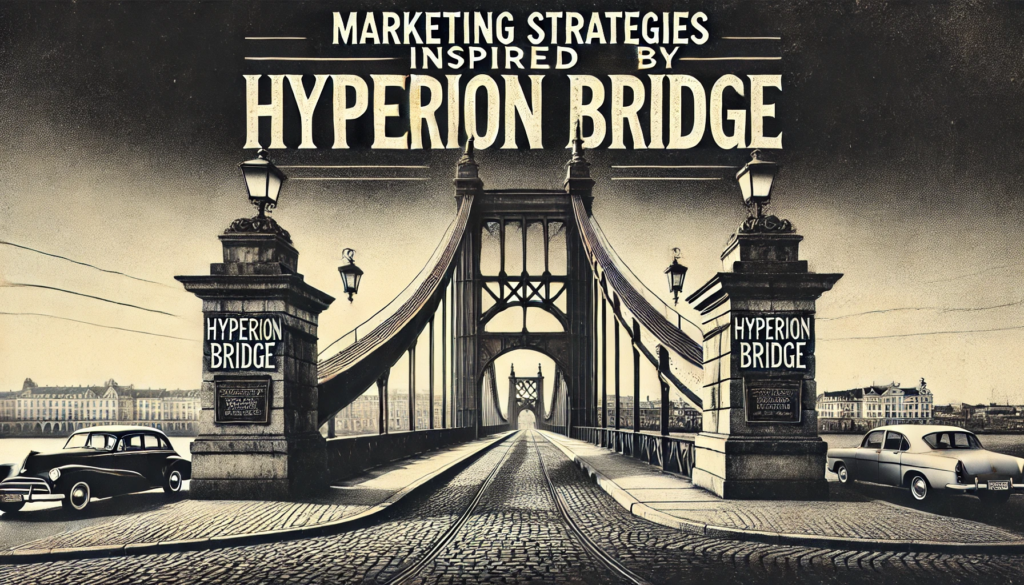
The insights gained from the Glendale-Hyperion Bridge debate extend beyond urban infrastructure and into marketing. Let’s explore how the principles from this debate can inspire target marketing strategies.
Understanding Your Audience
Understanding your audience is crucial in marketing. The city officials involved in the Glendale-Hyperion Bridge project needed to recognise their constituents’ diverse needs and preferences, including cyclists, drivers, and pedestrians. This mirrors marketers’ need to segment their audience and craft messages that resonate with each group. By conducting comprehensive market research and engaging with various community groups, the city could have developed a more inclusive plan that addressed the concerns of all stakeholders.
Effective Communication and Transparency
Clear and effective communication is fundamental to achieving successful marketing. Throughout the Glendale-Hyperion Bridge debate, clear and transparent communication from city officials could have mitigated much of the public’s frustration and confusion. Marketers can learn from this by ensuring that their communication strategies are straightforward, honest, and transparent. Providing regular updates and being open about challenges and progress can build trust and foster a positive relationship with the audience.
Community Involvement and Advocacy
Community involvement is another critical aspect of both marketing and infrastructure projects. The cyclists who advocated for safer pathways on the Glendale-Hyperion Bridge demonstrated the power of grassroots movements and community advocacy. Marketers can leverage this by encouraging user-generated content, testimonials, and community-driven campaigns. Engaging with the community builds loyalty and provides valuable insights and feedback to enhance the overall strategy.
Leveraging Media and Public Relations
The Glendale-Hyperion Bridge controversy attracted significant media attention, highlighting the importance of public relations in managing public perception. Marketers can use media coverage to their advantage by crafting compelling narratives and press releases highlighting positive aspects of their projects or campaigns. Building connections with journalists and media outlets can ensure the right messages are communicated to the broader public.
Crisis Management and Adaptability
Every project or campaign may encounter unexpected challenges or backlash. The Glendale-Hyperion Bridge debate underscores the need for effective crisis management and adaptability. Marketer should have contingency marketing plan and be prepared to pivot their strategy when necessary. Addressing concerns promptly and demonstrating a willingness to adapt can help mitigate negative impacts and maintain public trust.
Highlighting Benefits and Addressing Concerns
When promoting a project or product, it’s essential to highlight its benefits while addressing potential concerns. The city officials working on the Glendale-Hyperion Bridge needed to effectively communicate the benefits of the proposed changes while addressing cyclists’ safety concerns. Marketers should adopt a similar approach by clearly articulating the advantages of their offerings and providing solutions to any potential drawbacks.
Building Long-Term Relationships
Successful marketing is not just about short-term gains but also about building long-term relationships. The Glendale-Hyperion Bridge project offers a lesson in the importance of ongoing interaction with the community. Marketers should focus on nurturing relationships with their audience, providing consistent value, and maintaining open lines of communication to foster loyalty and advocacy over time.
Key Lessons for Modern Marketers
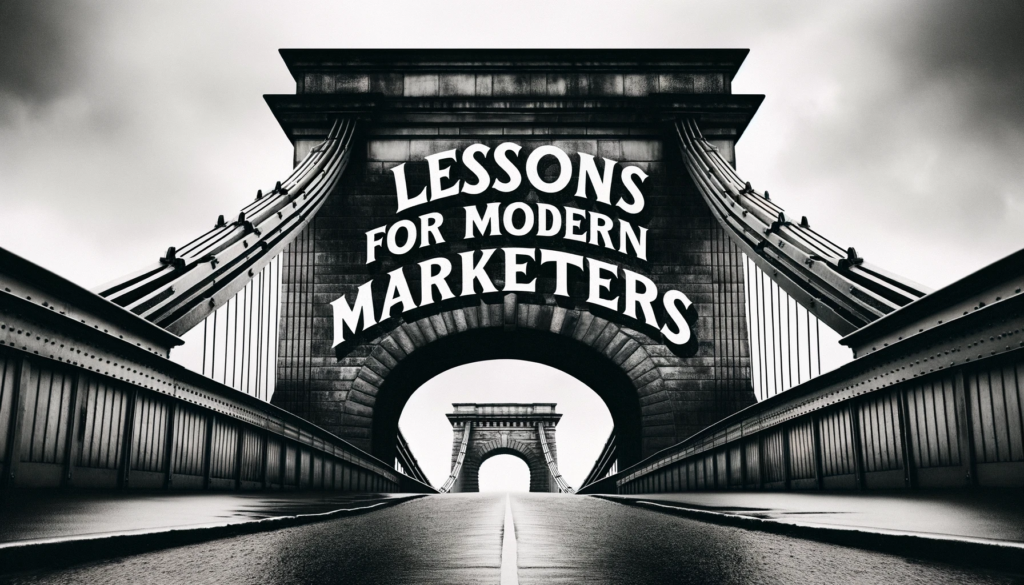
Glendale-Hyperion Bridge debate, rich in public opinion and emotional investment, offers a wealth of lessons for modern marketers:
Community Engagement:
- Example: Just as community members actively voiced their opinions on the bridge’s future, marketers should prioritise engaging their audience. Listening to and incorporating customer feedback fosters loyalty and trust.
- Tactic: Implement interactive campaigns such as polls, surveys, and social media discussions to understand and address consumer needs and preferences.
Balancing Tradition with Innovation:
- Example: The debate emphasises respecting historical significance while embracing modernity. Similarly, brands must maintain their core values and adapt to new trends.
- Tactic: Innovate within the framework of your brand’s heritage. For instance, a heritage brand could introduce modern product lines while preserving its classic identity in marketing campaigns.
Transparency and Communication:
- Example: Open communication from city planners about the bridge’s renovation plans helped manage public expectations. Likewise, transparency in marketing builds credibility.
- Tactic: Keep your audience informed about product changes, company policies, and behind-the-scenes processes. Use clear, honest communication to build a loyal customer base.
Emotional Connection:
- Example: The Glendale-Hyperion Bridge holds sentimental value for many, which fueled passionate debates. Emotional connections drive consumer behaviour.
- Tactic: Create campaigns that resonate emotionally with your audience. Storytelling, showcasing customer testimonials, and highlighting your brand’s positive impact can forge strong bonds.
Adaptability:
- Example: As the debate progressed, the bridge’s plans evolved to meet public needs better. Flexibility is crucial in marketing to respond to changing market dynamics and consumer preferences.
- Tactic: Monitor market trends and consumer behaviour closely. Be prepared to pivot your strategies to stay relevant and meet your audience’s evolving demands.
Conclusion
The Glendale-Hyperion Bridge controversy is a valuable case study for marketers looking to improve community engagement and project management. By understanding their audience, communicating effectively, involving the community, leveraging media, managing crises, highlighting benefits, and building long-term relationships, marketers can draw important lessons from this real-world example. The principles of good marketing are universal and can be applied to various contexts, including infrastructure development, to achieve positive outcomes and foster stronger connections with the community.








No Comments